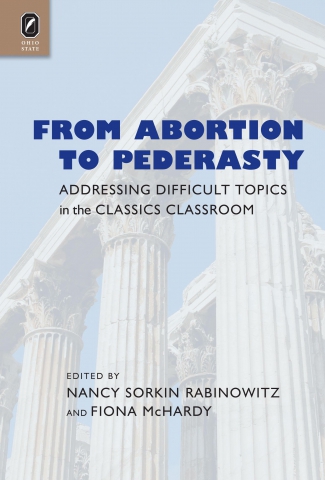
From Abortion to Pederasty: Addressing Difficult Topics in the Classics Classroom
Death can be an uncomfortable subject. Yet, much of what we know about ancient societies comes from funerary contexts, making discussions of death in the classroom unavoidable. Indeed elements of religion and the supernatural (itself a difficult topic), the funeral, and the afterlife are fundamental to all branches of Classical studies. When the subject is approached through a lens of mythology, or as a topic of philosophical debate, discourse is often dispassionate and detached. Moreover, when the subject of death is combined with tangible visual evidence, the anxiety quotient escalates. When faced with disturbing scenes, such as the prothesis on a Greek vase, where mourners surround a corpse, tear at their dishevelled hair and lacerate their cheeks, or whenever one must confront the meaning of a macabre image, like the photographs from Lefkandi that feature the skeletal remains of a bound woman, likely sacrificed to be buried with a man who was probably her husband, an obvious and predictable discomfort fills the classroom. Such visual and material expressions of death and the dead force us to ponder our own mortality. In this chapter we present a multi-faceted method for teaching death in the classroom, beginning with contextualization. Separated by time and culture, modern people do not experience death in the same manner as the ancient Greeks. When students are equipped with a better understanding of the ancient Greek culture of death, it is hoped that they will gain objectivity and the ability to separate classroom material from personal events. Thus, in the first and second parts of this chapter, we hope to educate teachers and provide, as a reference, a sampling of the visual and material evidence for death that is most relevant and most frequently encountered in the Classics classroom. The first part presents depictions of corpses and funerals in Greek art, and how ‘made to order’ objects commemorate and memorialize the dead, while the second part explains why we excavate and study graves. Shifting the focus to the classroom, the third part suggests techniques for facilitating an open discussion of death meant. To cope with negative emotional responses, a series of student writing assignments are offered, such as journaling, wiki participation, and responding to writing prompts. Also, a framework for a classroom debate on the ethics of displaying human remains in museums is provided. The intention of this final exercise is to encourage students to think critically about both sides of a controversial issue and understand how material remains from the past can inform the present.
